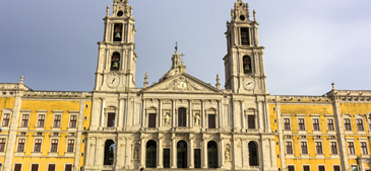
Mafra
Mafra is a city and a municipality in the district of Lisbon, on the west coast of Portugal, and part of the urban agglomeration of the Greater Lisbon sub region.
Mafra has one of the most magnificent monuments in the whole world: the Palácio Nacional de Mafra, also known as the Convento de Mafra.
This monumental complex contains a basilica, a monastery and a palace, and is the most important masterpiece of Portuguese Baroque. Its 40,000 m2 took 27 years to be built, work being concluded in 1744.
In Mafra you can also visit the Tapada Nacional, created in the mid-18th century as a park for King João V and his . In the Tapada, besides the rich flora, there are many different species of animals, such as deer, wild boar, foxes, partridges and various types of birds, including the endangered Bonelli’s eagles. Surrounded by a 21 kilometre, threehundred- year-old wall, the park has a small Rural Tourism house, the former Real Chalet de Caça, and two museums.
This monumental complex contains a basilica, a monastery and a palace, and is the most important masterpiece of Portuguese Baroque. Its 40,000 m2 took 27 years to be built, work being concluded in 1744.
Quinta de Sant’Ana
Is a stunningly beautiful, family-run property, just 30 minutes’ drive from Lisbon. A unique micro climate of cool nights, misty mornings and hot afternoons, result in fresh mineral white wines and elegant complex reds. Owners James and Ann Frost live on the estate with their seven boys and welcome visitors who wish to taste their wines. Winemaker: Antonio Macanita. Definitely a go for wine tasters.
Ericeira
Ericeira is the home to Portugal’s first/largest surfing association/club, the Ericeira Surf Clube. Founded in 1993, it developed from the surfing unit of the Ericeira Naval Club, which organized local, regional and national competitions in surf, bodyboard, kneeboard and longboard throughout the years. In addition, the Surf Club began a school to train local athletes and visiting tourists who wanted to learn how to surf.
Ericeira is believed to have originated from Ouriceira, itself a derivative of Ouriço, referring to the name for sea urchins (used in the parish’s coat-of-arms).
One legend suggested that Ericeira was the terra de ouriços (land of ouriços), owing to what was assumed to be an abundance of sea-urchins along the beaches. However, recent investigations, archived in the Museum of the Misericórdia, confirm that the animal mentioned was not an “ouriço”, but an “ouriço-caixeiro” (hedgehog), a species associated with the Phoenician goddess Astarte.
The ancient settlement presumably dates from the passage and colonization of the Phoenicians. During the Second World War, the region became a refuge for several foreign communities, including pockets of Poles, Germans, French, Belgians and Dutch expatriates fleeing Nazi persecution in their homelands.
From north to south: Porto Barril, Calada, São Lourenço, Coxos, Ribeira d’Ilhas, Empa, Slaughterhouse, São Sebastião, Algodio, Matadouro, South, Foz do Lizandro and São Julião.
Come and meet them one by one and let yourself be seduced by the diversity of landscapes and environments.
RIBEIRA D’ILHAS BEACH
Ribeira d’Ilhas is a bathing area further to the north of the parish of Ericeira, located around 3 km away.
Famous as the stage for many national and international surfing challenges, this beach is an authentic Portuguese “visitors’ room”, as its waves are the most media-friendly – and competed – of the Ericeira World Surfing Reserve. Situated in a valley where a creek (which gives it its name) flows out, its geographical configuration is that of a natural amphitheatre, with the high cliffs serving as observation points.
Ribeira d’Ilhas has a range of support facilities for bathers and surfers: parking lot, beach support area (with changing rooms, toilet facilities, first-aid station, an inviting restaurant and bar with an outdoor terrace and spaces for surfing schools), showers, access walkways, beach umbrellas and sunbeds on hire. The beach is supervised by a lifeguard and the SOS Praia (Beach SOS) system.
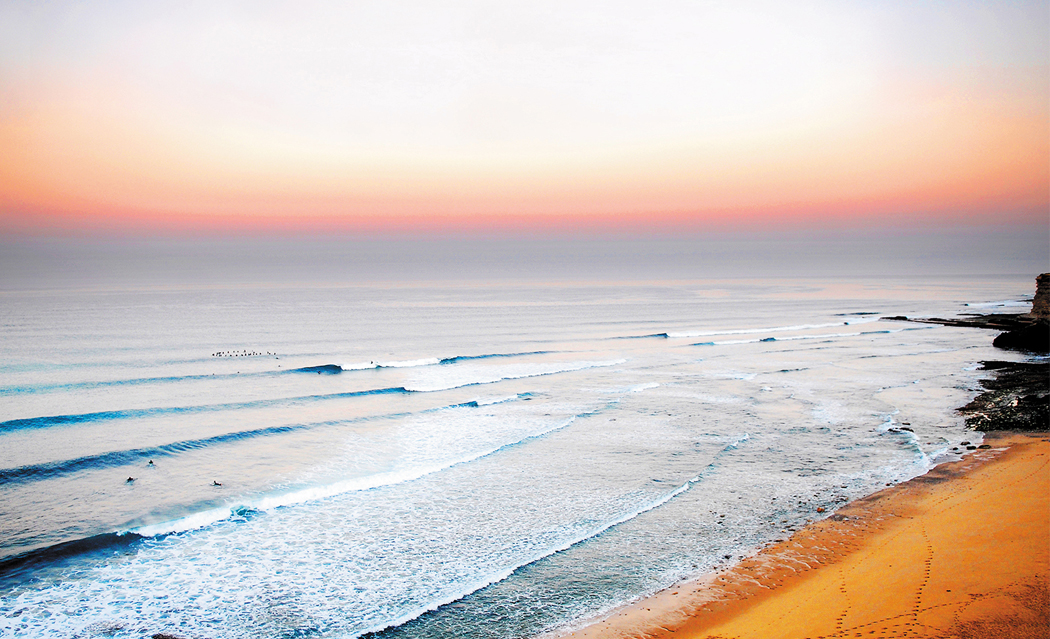
PESCADORES BEACH
This is the Municipality’s most historically relevant beach, as it was from here that, on 5 October 1910, the Portuguese Royal Family set sail into exile after the Establishment of the Republic was declared. It is also one of the most visited beaches, whether due to its centrality (the old part of Ericeira is exactly above) or due to the expanse of sand and its sheltered situation from the south and south-east winds. It has small portable beach support facilities during the swimming season, as well as fixed toilet facilities, integrated into the Fishing Harbour area. The beach is supervised by the SOS Praia (Beach SOS) system.
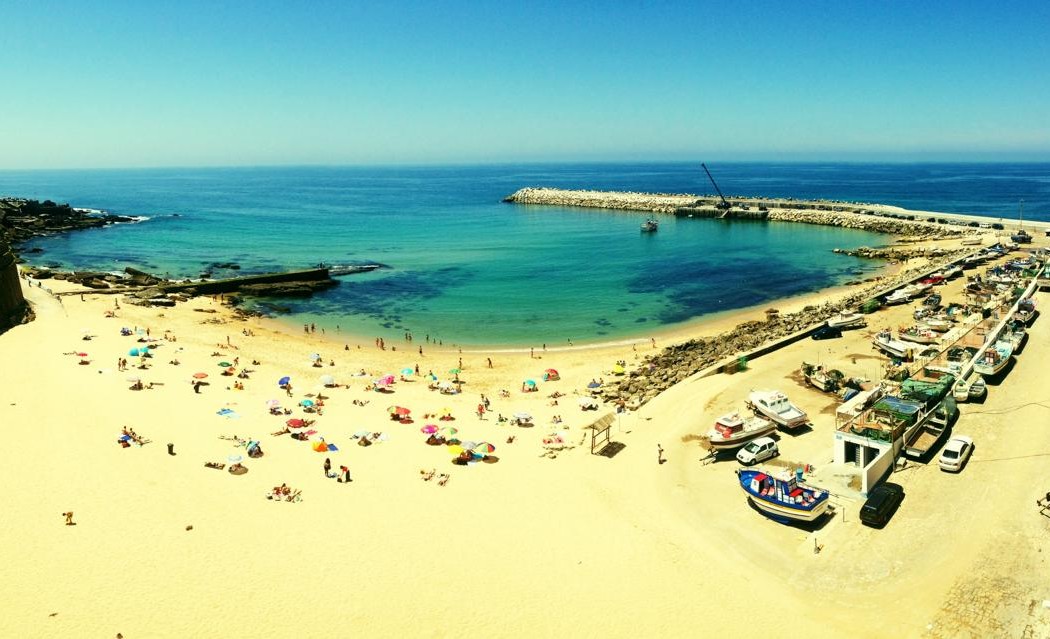
SÃO LOURENÇO BEACH
Rather spacious and among the most visited in the region, São Lourenço beach is located in the parish of Santo Isidoro, specifically between the areas of Ribamar and São Lourenço. It combines the beauty of its landscape – marked by the mouth of the Safarujo and the extensive beach – and the quality of the facilities provided to bathers: in addition to an ample parking lot, it has a beach
support area (with changing rooms, toilet facilities, first aid station and a pleasant bar with an outdoor terrace), a sports area in the sand, showers, access walkways, beach umbrellas and sunbeds on hire. Its waves, which form part of the Ericeira World Surfing Reserve, are highly sought after by surfers and stand up paddlers. The beach is supervised by a lifeguard and the SOS Praia (Beach
SOS) system. The cobbled streets of Lourinha, a larger town just five minutes’ drive away, offer even more options for eating and sleeping.
For surfers this is an exposed beach break with a river mouth that offers both lefts and rights. The waves are fairly consistent all year and the spot is a mere ten-minute drive from the famed ‘Supertubos’ near Peniche.
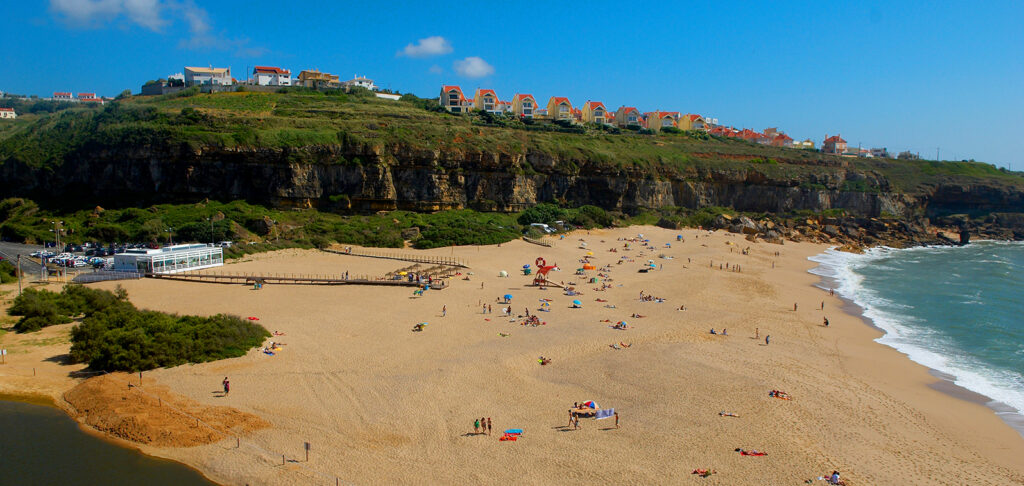
COXOS BEACH
Continuing within the parish of Santo Isidoro, we can find a small yet lovely horseshoe-shaped beach, bathed by extremely clear water and sheltered from the north wind. Don’t be fooled by the beach’s name: the world-famous waves of Coxos (which forms a part of the Ericeira World Surfing Reserve) are not found here, but in the neighbouring bay to the south. It has a small bar and toilet facilities. The beach is supervised by a lifeguard and the SOS Praia(Beach SOS) system.
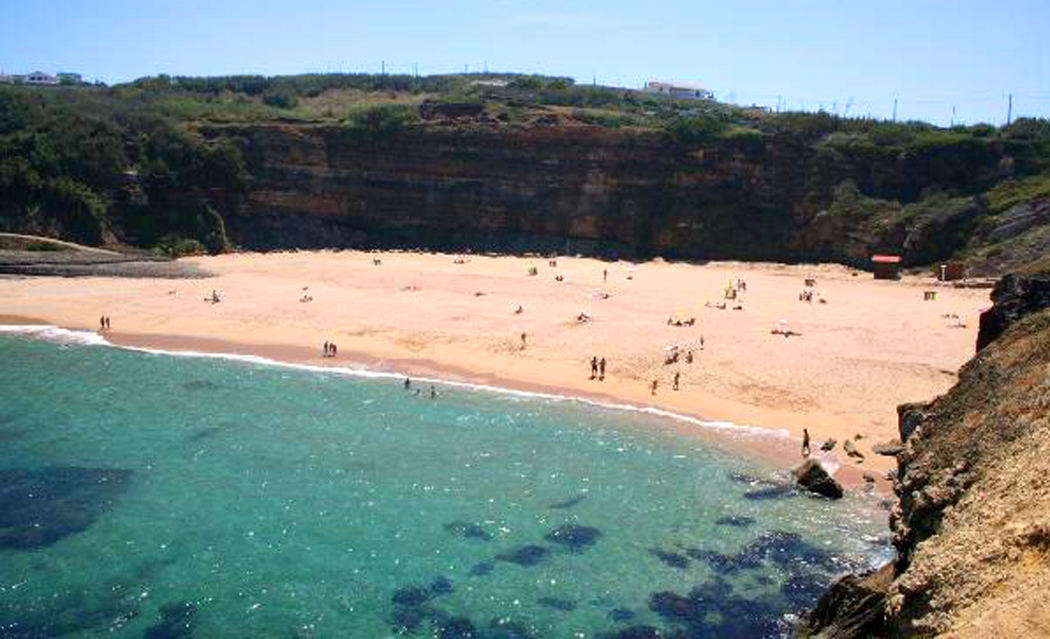
ALGODIO (OR NORTH) BEACH
With direct access to the centre of Ericeira, it is bounded to the south by the fishing harbour pier and to the north by a natural rocky spur, which separates it from São Sebastião beach.
Overlooking the Algodio beach are the beautiful and typical houses of the northern part of Ericeira town. It has modern beach support facilities in the form of changing rooms, toilet facilities and a bar with an outdoor terrace facing the sea, where it is easy to find boards and surfers.
The beach is supervised by a lifeguard and the SOS Praia (Beach SOS) system. There is limited parking, and the Urban Park of São Sebastião is recommended as an alternative.
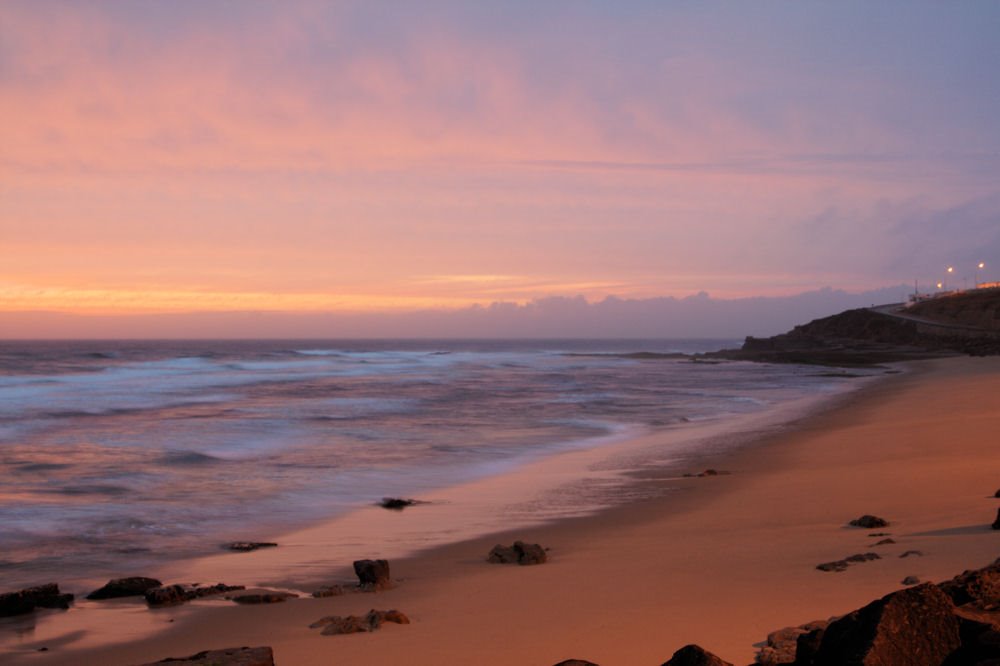
There are a few other recommendations:
Porto das Barcas & Peralta | Lourinhã | Sintra | Lisboa | Cascais | Silver Coast
Additional information please reach out to us.
Enjoy
Pata da Gaivota

